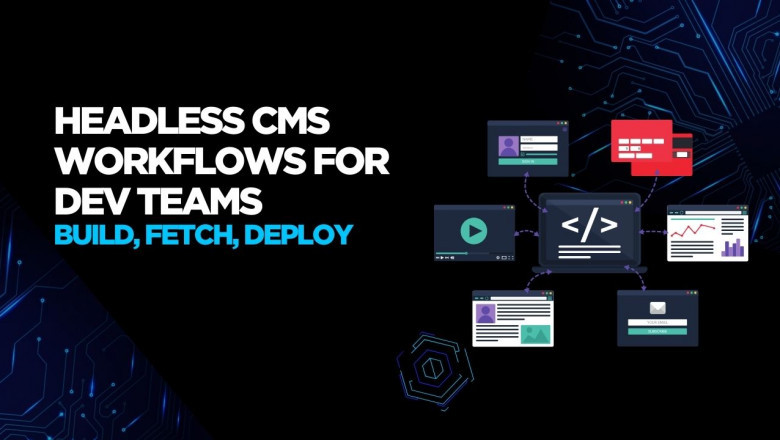views
Let’s face it: in 2025, traditional CMS platforms are starting to feel… a little outdated.
With brands racing to deliver content across more devices, platforms, and languages than ever before, the demand for flexibility is sky-high. And that’s exactly why headless CMS platforms are in the spotlight.
But what is a headless CMS, really—and why is everyone from indie devs to global enterprises making the switch?
Let’s break it down.
What Is a Headless CMS?
A headless CMS is a content management system where the "head"—the frontend—is separated from the backend.
In simpler terms: the content lives in one place (the backend), but it can be delivered anywhere (via APIs). That means you can design and build your frontend however you like—using React, Vue, Next.js, Astro, or anything else in your toolkit.
So, unlike traditional CMS platforms (think WordPress), which tightly couple content with templates and themes, a headless approach gives developers and content creators room to innovate.
Why Developers (and Teams) Love It
Let’s talk developer happiness for a second. If you're working in JavaScript, you're probably already in love with frameworks like Next.js or Nuxt. A headless CMS for JS stacks means you’re not forced to bend to a CMS’s frontend limitations. You build freely, using your preferred tools—and pull content via APIs when and where you need it.
For content teams? No more messing with layout. They focus on what they do best: creating and managing structured content. Whether you're dealing with blog posts, landing pages, or localized content in 10+ languages, headless streamlines the process.
Headless CMS vs Traditional CMS: Which One Wins in 2025?
In the headless CMS vs traditional CMS debate, the real question is: what are your growth goals?
-
If you’re managing one static site that rarely changes, a traditional CMS might still work.
-
But if you’re managing content across web apps, mobile platforms, digital signage, and multiple regions? Headless wins. Every time.
Performance, security, and scalability are all better handled by a headless system—especially when you're dealing with the demands of modern web delivery.
Why Enterprises Are Making the Switch
The surge in headless CMS for enterprise projects isn’t just a trend—it’s a necessity.
Enterprises are dealing with:
-
Multi-language, multi-brand content workflows
-
Teams spread across geographies
-
Rapidly evolving frontend requirements
With a headless setup, enterprise teams can centralize their content operations and push updates globally—all while maintaining lightning-fast performance on the frontend.
What About Headless CMS Pricing?
Great question. And one we hear a lot.
Headless CMS pricing varies depending on the platform. Some offer usage-based models (like number of API calls or content items), others charge per user or workspace. The good news is that there are options for every budget—from small startups to massive enterprise rollouts.
And here’s a tip: always request a headless CMS demo before you commit. It’s the best way to understand whether the platform aligns with your team’s workflow and tech stack.
Looking for the Best Headless CMS in 2025?
There are plenty of platforms out there, but if you're looking for one that checks all the boxes—scalability, performance, modern dev support, and a clean UI—Caisy is worth your attention.
Built for both developers and content teams, Caisy supports GraphQL, modern JS frameworks, localization, and real-time collaboration. Whether you're building enterprise apps or launching global marketing sites, Caisy is designed to grow with you.
👉 Book your demo and explore how Caisy can power your next-generation digital experiences.














Comments
0 comment